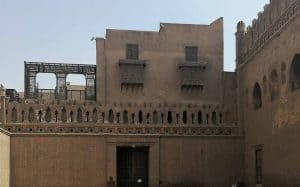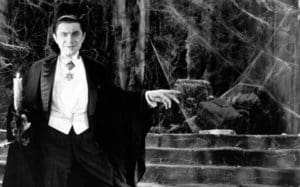The Symbolism Behind Celtic Knots: Unravelling Ancient Meanings

Updated On: May 07, 2024 by Shaimaa Olwan
Celtic knots epitomise the unending paths of existence and eternity, interwoven into the history and cultural identity of the Celtic people. These intricate designs are famed for their continuous loops that possess neither a start nor an end, symbolising the timeless nature of the spirit and the eternal cycle of life. Originating in early Celtic art, these knots have been a persistent emblem across various periods, each reflecting a confluence of history, culture, and artistry.

The symbolic significance of these knots often varies, encompassing themes from loyalty and love to the depiction of the interconnectedness of life and the cosmos. Knot patterns were a fundamental aspect of Celtic identity, used extensively in the ornamentation of manuscripts and monuments, signifying cultural heritage and beliefs. Over time, the art of knotwork evolved, intricately tying together the threads of past traditions with the fabric of contemporary life. The legacy of Celtic knots continues to resonate in modern times, finding expressions in art, jewellery, and even in ceremonial contexts, reconnecting us with a culture that continues to fascinate and influence the contemporary world.
Table of Contents
The Origins of Celtic Knots
Celtic knots represent a notable and enduring aspect of Celtic culture. They’re intrinsic to our understanding of Celtic art and symbolism, with influences spanning history and geography.
Ancient Roots and Influence
The designs of Celtic knots date back to the Roman Empire, where Celtic craftsmen were influenced by the art and motifs of Mediterranean cultures. While the Celts did not leave written accounts of their meanings, archaeological discoveries clearly show that their knotwork has been an important cultural symbol. Such continuous designs, with no obvious start or end point, could have represented the cyclical nature of life, eternity, or faith.
Celtic Art in Historical Context
In Ireland, Celtic knot designs flourished magnificently in illuminated manuscripts. The Book of Kells, dating from around 800 AD, is among the most famous examples, containing intricate knotwork borders and embellishments. Similarly, the Lindisfarne Gospels from northern England and the St. Teilo Gospels exhibit the extent of knotwork in ecclesiastical art. This artistic tradition illustrates the cultural exchange between the interacting Celtic and Roman worlds.
Symbolism in Celtic Knots
The intricate interweaving of Celtic knots is far more than aesthetic art; it reflects a tapestry of deep symbolism tied to eternity, spirituality, and religious belief. These endless loops without start or finish signify perpetual life, echoing the enduring spirit of ancient Celtic traditions and their influence.
Interlacing Patterns and Their Meanings
Celtic knots, with their unbroken lines weaving over and under without beginning or end, symbolize the eternal cycle of life. They commonly represent eternity in aspects such as love, loyalty, and faith. These designs resonate with the idea that our lives are interwoven with the universe and each other, intimating interconnectedness and continuity. Using a single thread highlights the Celts’ belief in the interconnectedness of life and the universe.
Spiritual and Religious Significance
Beyond their aesthetic allure, these knots hold profound spiritual and religious significance. They are often considered ancient Celtic symbols that carry meanings that transcend their origins, dovetailing with Christianity and other faiths. Knots with clear demarcations represent the trinity: life, death, and rebirth for some; the Father, Son, and Holy Spirit for others. Thus, they manifest a tapestry of both pagan heritage and Christian symbolism, as the endless nature of the knots is thought to symbolise the unwavering, eternal spirit and the notion of eternity in faith and religious commitment.
Key Variants of Celtic Knots
Celtic knots boast intricate designs, each with distinct meanings and historical significance. Below, we look at some of the key types of Celtic knots and their unique attributes.
Triquetra and Trinity Knot
The Triquetra, also known as the Trinity Knot, is a classic design comprised of three interlocked arcs. It’s often interpreted as a symbol of the threefold nature of things, such as earth, sea, and sky, or the Christian Holy Trinity. This knot’s symmetry and simplicity make it a popular choice in jewellery and artwork, representing eternal spiritual life with no beginning or end.
Shield Knot and Dara Knot
The Shield Knot is an ancient symbol typically associated with protection. Characterised by its four distinct corner areas, it was believed to ward off illness and evil spirits. It’s a testament to the protection and strength represented in Celtic culture. Conversely, the dara knot reflects an intricate array of interwoven lines, drawing inspiration from the roots of the oak tree and symbolising wisdom, strength, and durability.
Sailor’s Knot and Solomon’s Knot
The Sailor’s Knot comprises two intertwined ropes and was crafted by sailors as a keepsake for their loved ones during their voyages. It represents harmony, commitment, and a strong bond. With a more historical and global legacy, Solomon’s Knot signifies new beginnings and a resolution to problems, underlining the interconnectedness of all things.
Use of Celtic Knots in Early Manuscripts

Celtic knots are prominent in the rich tapestry of insular art, embodying the intricacies of faith and the craftsmanship of the early medieval period. Their interwoven designs are a testament to the artistic and symbolic significance these patterns held in religious manuscripts.
The Book of Kells and Its Artistry
The Book of Kells is one of Celtic art’s most remarkable exemplars. Our examination of its pages reveals a stunning array of complex interlacing. These designs are not just decoration; they imply a visual metaphor for the eternal, with their unending lines connecting the spiritual and material realms. Each knot in the manuscript is meticulously crafted, demonstrating the monks’ dedication to their faith and skill as artisans. It’s important to note that the artistry of the Book of Kells is not just confined to Celtic knots; it also includes a variety of intricate iconography – zoomorphic and symbolically rich illustrations that further emphasise the importance of this manuscript.
The Lindisfarne Gospels’ Contributions
Similarly, the Lindisfarne Gospels contribute significantly to understanding Celtic symbols in early Christian art. Hailing from a monastery off the northeast coast of England, this illuminated manuscript exemplifies insular art, intertwining local Anglo-Saxon artistic tendencies with Celtic motifs. The gospels showcase an outstanding use of vibrant colours and elaborate knot patterns, serving as a spiritual and artistic bridge between communities and cultures. The precision and depth of the interlacing knots in the Lindisfarne Gospels echo the complexity of the religious concepts they sought to represent visually.
Celtic Knots as Symbol of Identity
In exploring Celtic knots, we acknowledge their profound role as emblems of both Irish and broader Celtic identities, encompassing a rich tapestry of cultural significance.
Expressions of Irish and Celtic Heritage
Celtic knots, with their intricate and endless paths, serve as a proud symbol of Irish and Celtic heritage, representing a connection to ancestry that is both timeless and enduring. These distinctive designs are deeply entwined with Irish culture, often seen adorning monuments, manuscripts, and jewellery. Reflective of the broader Celtic culture, they encapsulate the values of unity and continuity.
In Irish culture, Celtic knots manifest not just as ornamental art but as a crucial element embedded within the cultural identity. These knots date back centuries, flourishing during periods of rich artistic achievements, notably observed in historical artefacts and religious texts like the famed Book of Kells. This manuscript exemplifies the use of knots to convey a sense of boundless infinity, linking present and past generations through visual storytelling.
Celtic knots signify more than artistic beauty as they grace countless crafts and cultural tokens; they underscore a collective narrative that resonates across the Irish Sea and beyond. The unbroken lines symbolise life’s intertwining nature, reminding us of our shared heritage and the intricate connections that define us.
Through their presence, we are invited to recognise and celebrate the depth of Irish and Celtic heritage, a testament to a diverse cultural landscape shaped by time-honoured traditions.
The Evolution of Celtic Art
As we explore Celtic art’s historical journey, we observe a dynamic interchange influenced by various cultures across Europe and beyond. Its adaptability and transformative capacity have allowed it to absorb and reflect myriad artistic nuances over the centuries.
Influences from Europe and Beyond
Celtic art originated in central Europe, flourishing during the Iron Age. It subsequently became intricately tied to the regions dominated by the Celts, extending from the British Isles to as far east as Turkey. With the expansion of the Roman Empire, Celtic artistry encountered Roman techniques and motifs, leading to an intriguing synthesis of styles.
The Viking incursions and Scandinavian artefacts also left their mark on Celtic design, introducing new patterns and ornamental approaches. The interlacing characteristic of Celtic knots may have been inspired by these Northern artistic traditions.
Moving through time, Islamic art also contributed to the Celtic aesthetic, particularly through trade. The introduction of Islamic patterns and geometric complexity can be seen in later Celtic manuscripts and artefacts, displaying a reverence for intricate mathematical designs.
In the realm of architecture, the Romanesque and Gothic movements came to influence Celtic regions. Interwoven with Celtic art’s own transformation, they produced remarkable ecclesiastical and secular structures adorned with characteristic Celtic motifs.
Our ongoing research and examination of Celtic art reveal a canvas on which the strokes of European, Roman, Islamic, and native traditions blend to create a legacy that continues to inspire and inform our artistic understanding today.
Celtic Knots in Modern Times
Celtic knots continue to be a profound symbol of heritage and culture. Their intricate designs are present in various forms, weaving history into the fabric of modern life.
Tattoos and Personal Adornments
Tattoos bearing Celtic knotwork serve as personal emblems and as a connection to ancestral roots for many individuals. Common motifs include the Celtic love knot, symbolising enduring love, and Celtic crosses, which combine the traditional Christian cross with distinctive Celtic knotwork. These tattoos often represent a tapestry of beliefs, merging the spiritual with cultural pride.
Celtic Jewelry and Decoration
Our contemporary interpretation of Celtic symbols is vibrantly portrayed through jewellery and decoration. Makers of Celtic jewellery craft pieces that encapsulate the essence of the knots, infusing them with meaning. A widely recognised design, the love knot, is frequently sought after in rings and pendants, symbolising the strength of connection and unity. Celtic knotwork also adorns various home decorations, from wall art to functional items, extending the reach of this ancient art into our everyday lives.
The Artistic Techniques of Knotwork
Celtic knotwork is a form of artistic decoration that involves intricate interlacing of lines and shapes. At the forefront of its design philosophy are plait and step patterns, alongside spiral, key, and interlaced motifs, each contributing to a distinctive aesthetic emblematic of Celtic art.
The Making of Plait and Step Patterns
The intertwining of lines creates plait patterns that resemble the plaiting of hair or textile fibres. These designs generally comprise single, uniform strands that bend at right angles to form a woven texture. Often found in the borders of Celtic manuscripts, plait patterns serve as visual metaphors for life’s interconnected nature.
Next, spiral knots, commonly found in the Celtic tradition, consist of arcs emanating from a central point and rotating outward. The triple spiral, or triskele, is a recurrent motif, symbolising concepts such as land, sea, and sky.
Step or key patterns are notable for their angular, step-like sequences. These designs are characterised by a series of right-angle turns that form intricate labyrinths within the artwork. The repetitive geometry is believed to reflect themes of eternal progress and life’s journey.
Finally, interlaced patterns involve weaving lines around each other in complex arrangements so that they appear to flow over and under one another seamlessly. These continuous lines symbolise eternity and the cyclical aspect of the natural world, emphasising the concept of no beginning or end.
Celtic Knots and Their Significance in Ceremonies
Celtic knots carry deep symbolism and are integral to many ceremonies. They are particularly significant in celebrations of unions and continuity.
Wedding Traditions and Symbolic Gifts
At weddings, the intricate designs of Celtic knots represent the lasting bond and love between two people. The interlacing patterns signify no beginning or end, akin to the eternal nature of love. Wedding rings often feature Celtic knot designs to symbolise this unbreakable connection.
Regarding symbolic gifts, the motherhood knot is a beautiful emblem of the enduring bond between a mother and her child. This knot’s intertwining lines represent the unyielding love and connection in the maternal relationship.
Celtic knots can also embody the value of friendship and unity. Artisans craft various items with these designs to serve as gifts that honour and celebrate these deep connections among people.
Prominent Symbols in Celtic Knot Motifs
Celtic knotwork embodies a rich tapestry of symbolism and meaning, woven with threads of cultural significance passed down through generations. Each design holds a story, pulling together notions of eternity, loyalty, and the intertwining of paths.
From the Celtic Cross to the Serch Bythol
The Celtic Cross is perhaps one of the most recognisable symbols of Celtic heritage. It represents the intersection of divine belief and earthly existence, with its distinct nimbus reflecting Christianity and older sun worship beliefs. This emblem pertains to faith and spirituality, with its cross arms bound by a unifying circle.
The Oak Tree, venerated in Celtic tradition, is a stoic symbol in Celtic lore. It signifies strength, endurance, and wisdom, its acorns representing potential and growth. Routinely depicted in Celtic art, the Oak illustrates the Celts’ profound reverence for nature.
The Celtic Spiral Knot, or the Triskele, ensnares the essence of eternity and the continuous cycle of life, death, and rebirth. This triple-spiral motif hints at the progress of time and the perpetual motion of everything in the cosmos. It’s a visual metaphor for learning, growth, and evolution.
The Serch Bythol symbolises the concept of duality and enduring love. Comprised of two triskeles, it holds an embrace of two lives converging on a journey that neither begins nor ends — a testament to eternal love and connection.
We often employ these motifs in our designs to convey a sense of protection and unity. The interlacing lines remind us of the interconnectedness of all things and our place within a larger tapestry. By adopting these ancient symbols, we bring forward the legacy and sentiments they carry, upholding their profound depth and timeless relevance.
Celtic Knots in Contemporary Culture
Celtic knots endure in today’s world, woven into the fabric of modern art and design, and continuing to symbolise enduring values and heritage.
Influence on Modern Art and Design
Our exploration of Celtic knots in contemporary culture reveals their significant impact on modern art and design. These intricate designs, which epitomise the essence of Celtic art, have transcended time to influence various artistic domains. In modern design, you will find Celtic symbols infusing a touch of ancient mysticism into jewellery, tattoo art, and fashion.
Jewellery: Designers often incorporate Celtic knots into necklaces, bracelets, and rings, using precious metals and stones to emphasise the knots’ endless loops and paths. Tattoos: The knots’ unbroken lines, which traditionally represent eternal life and love, make them a popular choice for tattoos. They often symbolise a connection to one’s ancestral roots or a personal belief in the cyclical nature of life.
In graphic design, these motifs adapt seamlessly, providing a classic and contemporary aesthetic. More than just ornamental, using Celtic knots in logos and branding conveys a sense of timelessness and connectivity.
The resurgence of interest in folk traditions and heritage crafts has also revived Celtic motifs in various creative sectors. From pottery to printmaking, the distinctive weaving patterns serve as a source of inspiration, integrating the old with the new and celebrating the rich tapestry of Celtic history within modern times.
Frequently Asked Questions
In this section, we address several commonly asked questions about the symbolism of Celtic knots to provide a deeper understanding of their historical and cultural significance.
What are the interpretations of different Celtic knot patterns?
Various Celtic knot patterns each have their own interpretations. For example, the Celtic shield knot is associated with protection, a design believed to safeguard one against negative forces.
How do Celtic knots signify the concept of eternity?
The endless paths in Celtic knots represent a line with no starting point or end, thus signifying eternity and the timeless nature of the human spirit.
What is the relationship between Celtic knots and Irish heritage?
Celtic knots play an integral role in Irish heritage, showing up in art, jewellery, and monuments. They are a proud emblem of Irish identity and the nation’s rich past.
Does the Trinity knot hold a specific connotation in Celtic culture?
Indeed, the Trinity knot, also known as the Triquetra, holds a special place in Celtic culture, often symbolising concepts that come in threes, such as life, death, and rebirth, or earth, sea, and sky.
Can Celtic knots be traced back to Pagan origins?
The origins of Celtic knots might be rooted in Pagan beliefs, where they were likely to represent the interconnectedness of all life, a concept fundamental to many pagan philosophies.
How do the designs of Celtic knots convey the theme of love?
The interwoven patterns of Celtic knots often symbolise love and unity. The intertwining lines with no end point imply a love that is eternal and uninterrupted.






